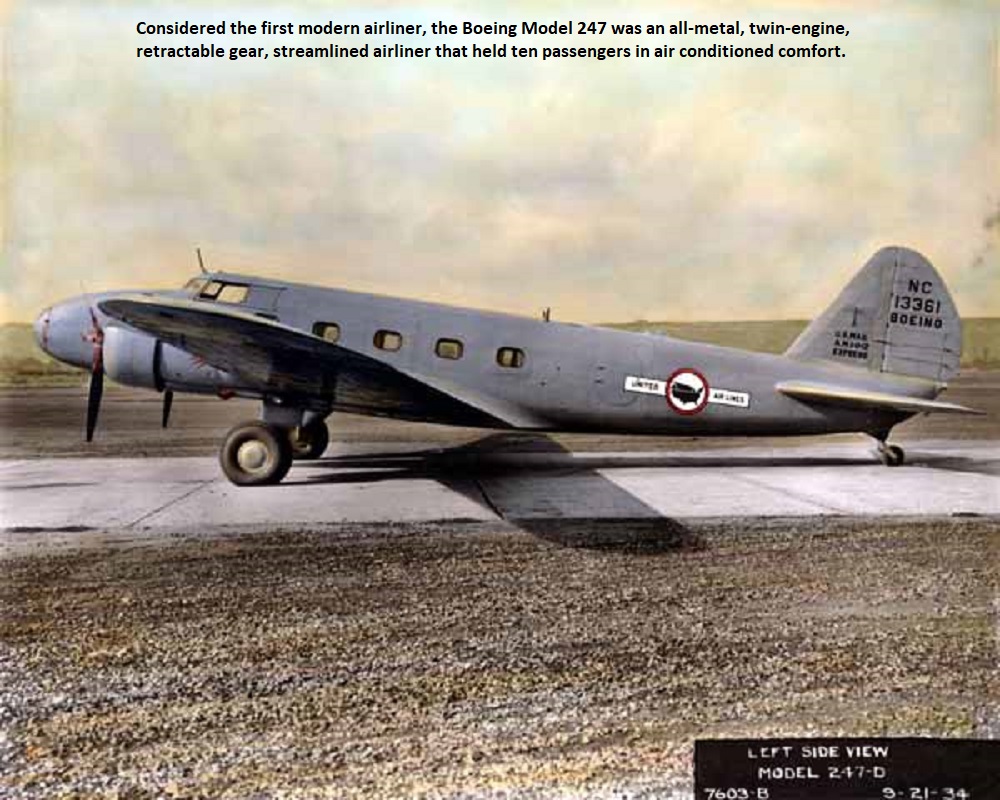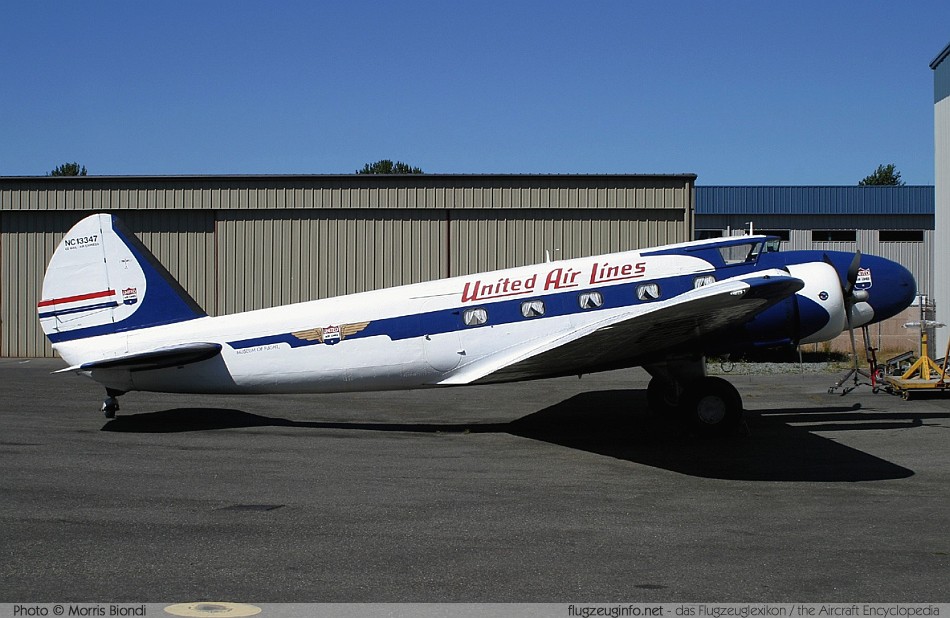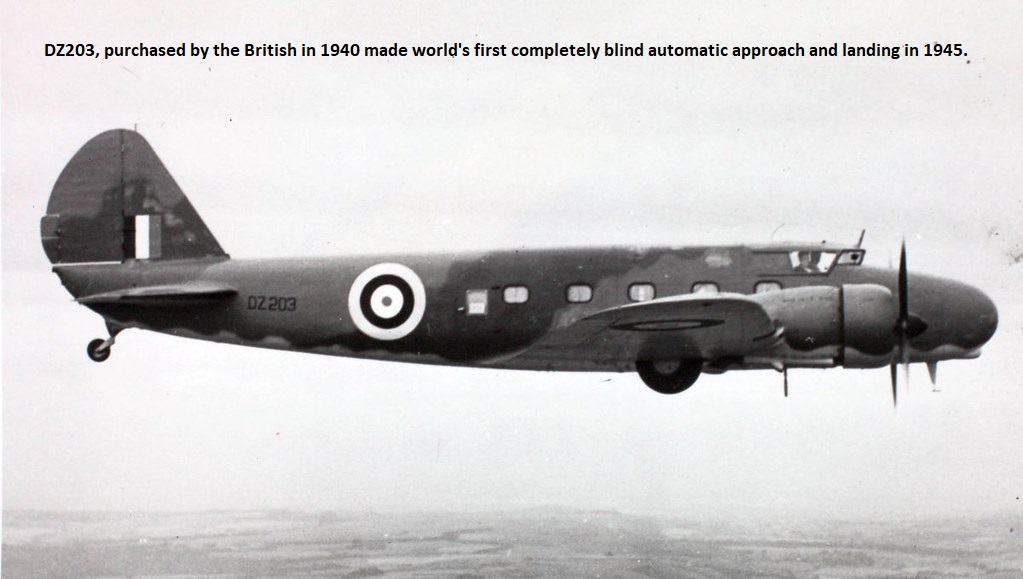
|
Boeing Model 247 |  |
||||||||
|---|---|---|---|---|---|---|---|---|---|---|
 |
 |
 |
 |
 |
 |
 |
 |
 |
 |
|
| |||
|
The year 1933 was extremely important in the history of air transport, for it was then that the two original ancestors of the modern airliner appeared. One was the Boeing Model 247 which made its inaugural flight on February 8, 1933, and the other was the Douglas DC-1, which flew later in the year in July. Although later developments of the Douglas aircraft were to become the most widely used of the early modern airliners, the Boeing 247 pioneered a whole new generation of transports. It was an evolution of Boeing airplanes that incorporated the aerodynamic and structural features of the Boeing Monomail and B-9 Bomber.1 It was an excellent airplane and could climb with one engine out, while carrying a full load. It was operated by United Airlines and other US carriers as well as Lufthansa of Germany. However, its capacity proved too small and its passengers found it awkward to step over the main spar in the aisle. At total of seventy-five Model 247s were built which was considered a creditable total for any aircraft of the thirties.2 After the First World War, in terms of both economy and safety, airline operators were convinced that multi-engine aircraft were preferable for flying long distances and across water. However, while huge lumbering biplanes were still in vogue, the Boeing company designed the Model 247 as a new ten-passenger aircraft of revolutionary concept. The all-metal airframe was well streamlined, with low monoplane wings, a smooth oval semimonocoque fuselage, neatly cowled twin engines, and an enclosed cockpit for the pilots. The undercarriage was retractable, giving the aircraft a maximum speed of over 290 km/h (180 mph). This was far higher than the speed of contemporary Curtiss T-32 Condor biplane and Fokker F VII, and Ford tri-motors that were in airline service at the time. Other innovations included, wing and tail deicing systems, and aileron and elevator trim tabs. There was also a galley and toilet at the rear of the airplane.3 The 247 was an immediate success and the first production aircraft were quickly followed by the refined Model 247D. But destiny still held further success for the airliner. Many great aircraft built between the wars were evolved to take part in air races—such contests were also excellent proving grounds for new or established production types. So, when the MacRobertson Race from London to Melbourne, Australia was organized in 1934, a Boeing Model 247D was entered. Flown by Col. Roscoe Turner and Clyde Pangbourne, it gained third place behind its great rival, the DC-2 operated by KLM Airlines. A special British built de Havilland DH.88 Comet came in first. 4 The Model 247 was eclipsed by the DC-3, which in many ways a more refined aircraft than the Model 247. It was larger, faster and carried more passengers. Also the mid-wing section was integral to the fuselage, which eliminated the spar running through the cabin as it did on the 247. A total of 75 Model 247s were built, which was an impressive amount for the 1930s, but that amount was miniscule compared to the thousands of DC-3s that would replace it. |
|||
| Specifications: | |
|---|---|
| Boeing Model 247D | |
| Dimensions: | |
| Wing span: | 74 ft (22.6 m) |
| Length: | 51 ft 7 in (15.7 m) |
| Height: | 12 ft 2 in (3.70 m) |
| Wing Area: | 836 sq ft (77.70 sq m) |
| Weights: | |
| Empty: | 9,144 lb (4,148 kg) |
| Gross T/O: | 13,650 lb (6,192 kg) |
| Performance: | |
| Maximum Speed: | 200 mph (322 km/h) |
| Service Ceiling: | 25,400 ft (7,740 m) |
| Rate of Climb: | 1,150 ft (350m)/min |
| Normal Range: | 745 miles (1,199 km) |
| Powerplant: | |
| Two Pratt & Whitney 550 hp Wasp S1H1-G, 9-cylinder radial engines. | |
Endnotes:
|
1. Peter M. Bowers. Boeing Aircraft Since 1916 New York: Funk & Wagnalls, 1968. 182. 2. Howard Mingos, ed. The Aircraft Year Book for 1935. New York: Aeronautical Chamber of Commerce of America, Inc., 1935. 248. 3. Kenneth Munson. Airliners Between the Wars 1919-39. New York: The Macmillan Company, 1972. 161. 4. Howard Mingos, ed. 167. |
Return To Aircraft Index.
© The Aviation History On-Line Museum.
All rights reserved.
September 14, 1997. Updated April 17, 2022.







